SafeHome.org may receive compensation from some providers listed on this page. Learn More
We may receive compensation from some providers listed on this page. Learn More
SafeHome.org may receive compensation from some providers listed on this page. Learn More
We may receive compensation from some providers listed on this page. Learn More
Our team appreciated Equifax’s credit monitoring capabilities but an outdated website made it difficult to use some features.
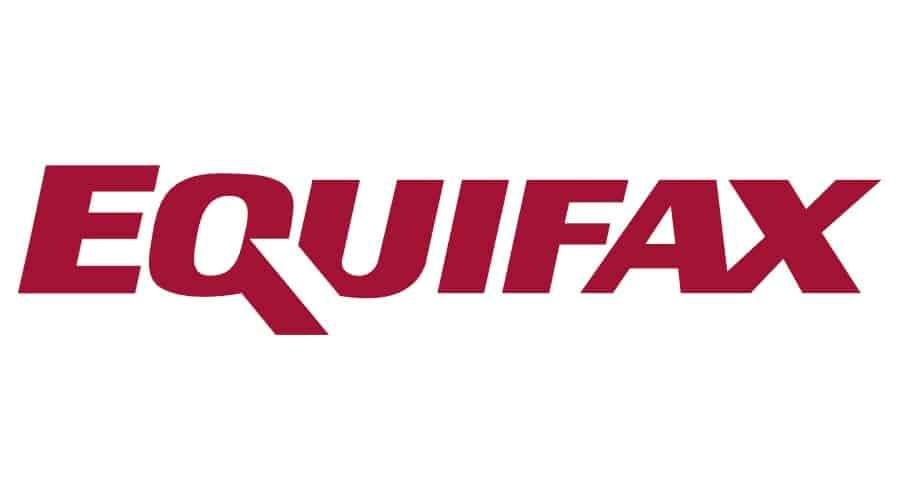
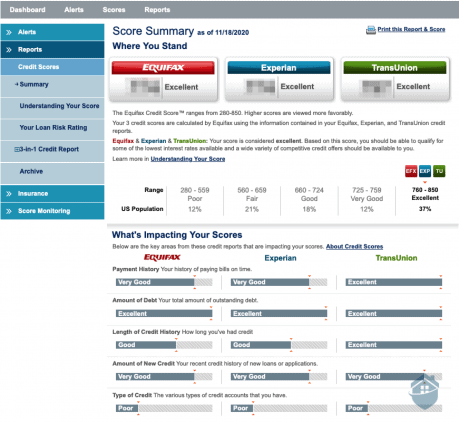
Check out more recommendations from the SafeHome team:
Equifax has been around for over a century and is a well-known name in credit monitoring, so it makes sense that they would want to get into the identity theft protection game. That said, it’s not the company’s primary focus. Could the credit monitoring bureau compete with the features we found when we reviewed IdentityGuard or the attention to detail we saw when we looked at IdentityForce? Is comprehensive protection prioritized at Equifax, or is it an afterthought?
The answer, we found, after putting the service to the test was, “yes, but in some ways no.” We know that may sound indecisive, but keep reading and you’ll see what we mean, because there is a lot to like about Equifax’s identity theft protection with a few drawbacks.
Did You Know? Equifax was founded way back in 1899 by Cator and Guy Woolford as the Retail Credit Company in Atlanta, Georgia.1
We’ll start by saying Equifax actually offers a pretty broad array of services including ID Patrol, Score Watch, and WebDetect. And starting at $16.66 per month when paid annually, the prices aren’t bad compared to the top identity theft services.
That’s for Equifax’s flagship product, Equifax Complete Premier. Their lower tier of service, Equifax ID Patrol, offers similar protections for a lower price, but we wanted to make sure we were getting all the bells and whistles for the purposes of this review.
For a more complete breakdown visit our Equifax plans and pricing guide or take a look at this chart for a quick overview.
| Service | ID Patrol | Complete Premier |
|---|---|---|
| Three-Bureau Credit Monitoring | Yes | Yes |
| Three-Bureau Credit Report | Yes | Yes |
| Three-Bureau Credit Scores | No | Yes |
| Internet Monitoring | Yes | Yes |
| Fraud Alerts | Yes | Yes |
| Equifax Credit Lock | Yes | Yes |
| Lost Wallet Assistance | Yes | Yes |
| 24/7 Access to Equifax Credit Score and Report | No | Yes |
| Equifax Credit Score Monitoring | No | Yes |
| Identity Restoration Services | No | Yes |
| Stolen Funds Replacement | Up to $1 Million | Up to $1 Million |
| ID Theft Insurance | Up to $1 Million | Up to $1 Million |
| Price | $16.95 Per Month | $19.95 Per Month |
As you can see, there are several critical services that overlap, but for the extra three dollars per month, you get some pretty significant bonuses when you upgrade from ID Patrol to Complete Premier.
Also keep in mind that Equifax has a family plan option. At $29.95 per month, it includes the same capabilities as Complete Premier for two adults as well as credit monitoring and some ID theft features including $1 million of insurance for up to four kids. It’s worth mentioning here that if you’re looking for a family plan, we recently created a comprehensive guide covering the best identity protection for families.
We hate to say it, but we got off to a rocky start with Complete Premier. The site’s registration page had a few functionality hiccups that started us off with a bad taste in our mouth. When we clicked on the “Get Started” button, the registration page didn’t want to load. After several tries, we managed to get it to work, though. Not off to a great start, but hey, sometimes technical hiccups happen. Nothing to get too upset over.
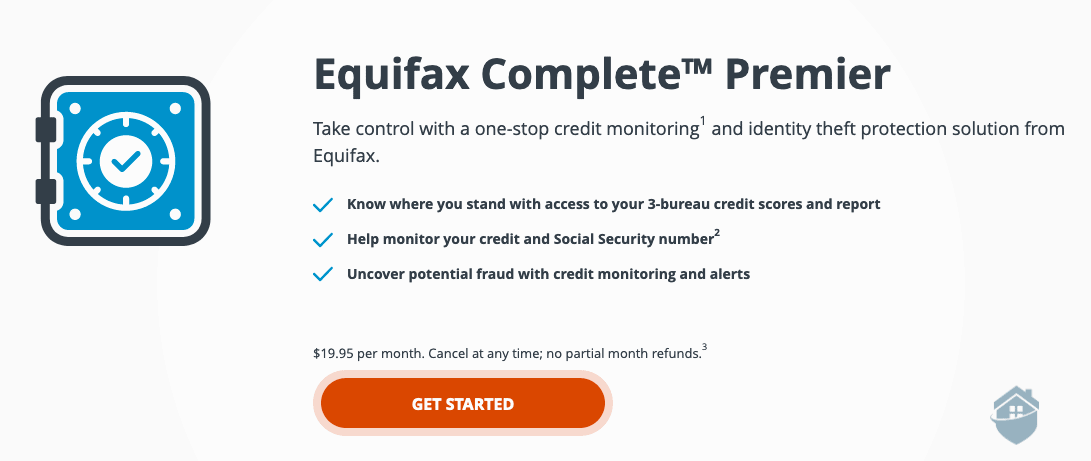
When we hit Get Started on the Equifax Complete Premier page, the page didn’t load on our first attempt.
Once we got to the registration screen, we were met with a standard, utilitarian form asking for our basic information, including our full name, gender, address, social security number, birthday, and phone number. Pretty standard fare here, and the technical bugs seemed to be gone. The last time we tested it, there were automatic pop-ups at points to tell us why they were requiring certain pieces of information, but in a recent website update, they removed them. When we see these tooltips like we saw when we reviewed ProtectMyID, we appreciate it so we were disappointed Equifax removed them.
On this screen, we picked whether we wanted to pay monthly or annually too. That’s actually the part that failed to load on our first few tries. Eventually it did though and we opted to pay $19.95 per month instead of $199.95 per year ($16.66 per month).

This is what the old Equifax tooltips used to look like explaining why they needed certain pieces of information.
After entering our personal information, we were asked to create our account by generating a username, a password, and a security question. Let’s talk about that last item really quickly, though.
Many experts argue that security questions are no longer effective. They claim that if an identity thief made it to the point of needing to answer your security question, they could likely already answer the question. Most security questions could be answered by browsing someone’s social media after all. To get around this, make up an outrageous answer to a security question, but just make sure you’ll remember it.2
Once that was done, we verified our identity via two-factor authentication and completed our order. Just something to note—after entering the code that is either texted or emailed to you, it can take between 60-90 seconds for the account to become active. Don’t hit the back button, or you might get double-charged.
Did You Know? Double-charges aren’t that uncommon and can result from a myriad of issues from human or technical error to fraud. Pay attention to your credit card statements and scores to keep yourself protected.3
We verified our identity and then proceeded to the order confirmation screen. This served as our receipt and also had our transaction code on it, so we printed it out (it never hurts to have a hard copy, especially when storing it within the confines of the best home security system!). Once that was done, we clicked “View My Product” to launch the service.
Before we get to that, though, one final note about the ordering process. While the website feels a little out of date, everything functioned just fine after our initial hiccup. In all, it probably took us five to ten minutes total to get through everything. The ease-of-setup is actually right in line with other brands we’ve used.
Now let’s check out our services!
First things first: the dashboard. The Equifax dashboard itself looked well organized and detailed, if only a little stale. It included our scores at the top, our alerts in the middle, our credit report below that, and finally, our debt summary. On the right-hand column, we had access to our additional resources like our automatic fraud alerts, our Experian credit lock, our lost wallet assistance, and our mobile alerts. Under that, we had access to articles about identity theft and our insurance documents.
We’ll get into these functions in a minute, but just a word about the overall first impressions: the dashboard felt intuitive and complete, but… it’s just really dated. The design choices are old-school-internet (like, early 2010’s old school). This wasn’t a deal-breaker for us, but design does matter.
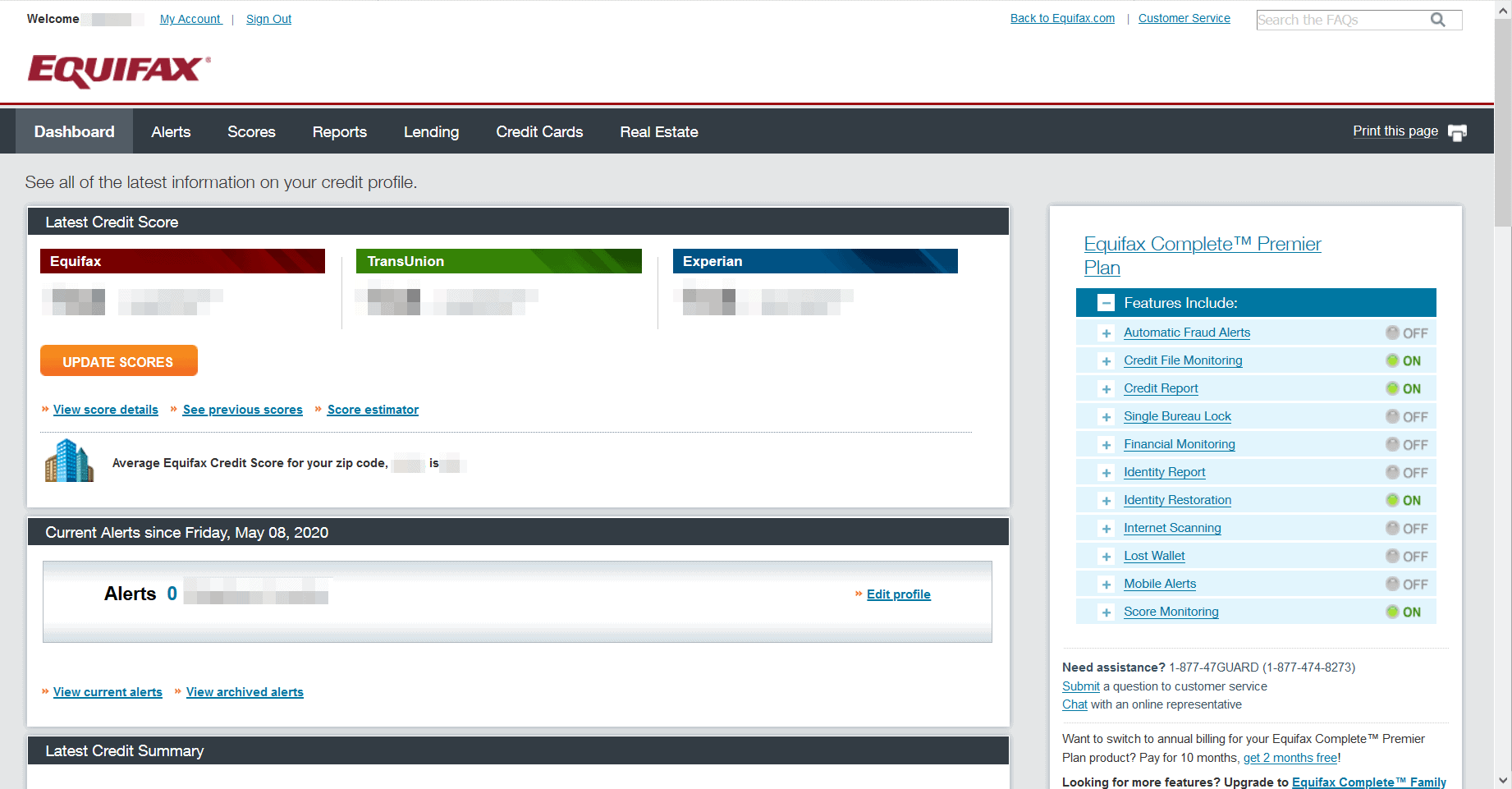
When we logged into our Equifax account, the dashboard showed us our credit score with all three bureaus.
And the age of the dashboard actually shows in some of the functionality. Complete Premier is still using Adobe Flash for the Debt Summary section (and elsewhere on the site.) Adobe stopped supporting Flash at the end of 2020. That means it no longer gets security updates, which is why it’s blocked on most major browsers. Well, and the fact that Flash is a well-known vector of attack for hackers.4 This is one of our biggest complaints about Equifax.
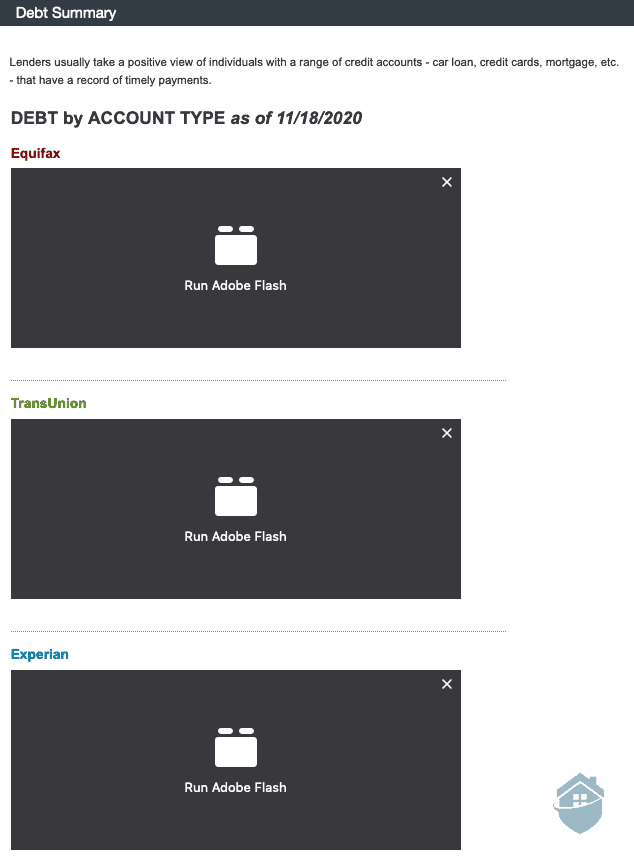
To view our Debt Summary with Equifax, we needed to manually opt in for our browser to run Flash.
Now we’re not saying that everything needs to be brand new and super slick, but it does inspire confidence when a service feels modern and up to date. We saw this in particular when we tested IDX identity theft protection. We’re not saying one is necessarily better than the other, but it’s something to consider. Just be sure the service you ultimately choose is aligned with your preferences.
Did You Know? Flash was created in November of 1996, making it one of the oldest multimedia players online.
It’s time to get down into the functionality. The first item on the list is our credit scores.
Now it’s time to sing Equifax’s praises. Their credit score monitoring was some of the best we’ve seen. It gave us access to all three credit bureau scores, a detailed breakdown of how those scores were calculated, and information on how to influence them. We could check out our previous scores and even see the average score for our zipcode. Pretty handy information all around.
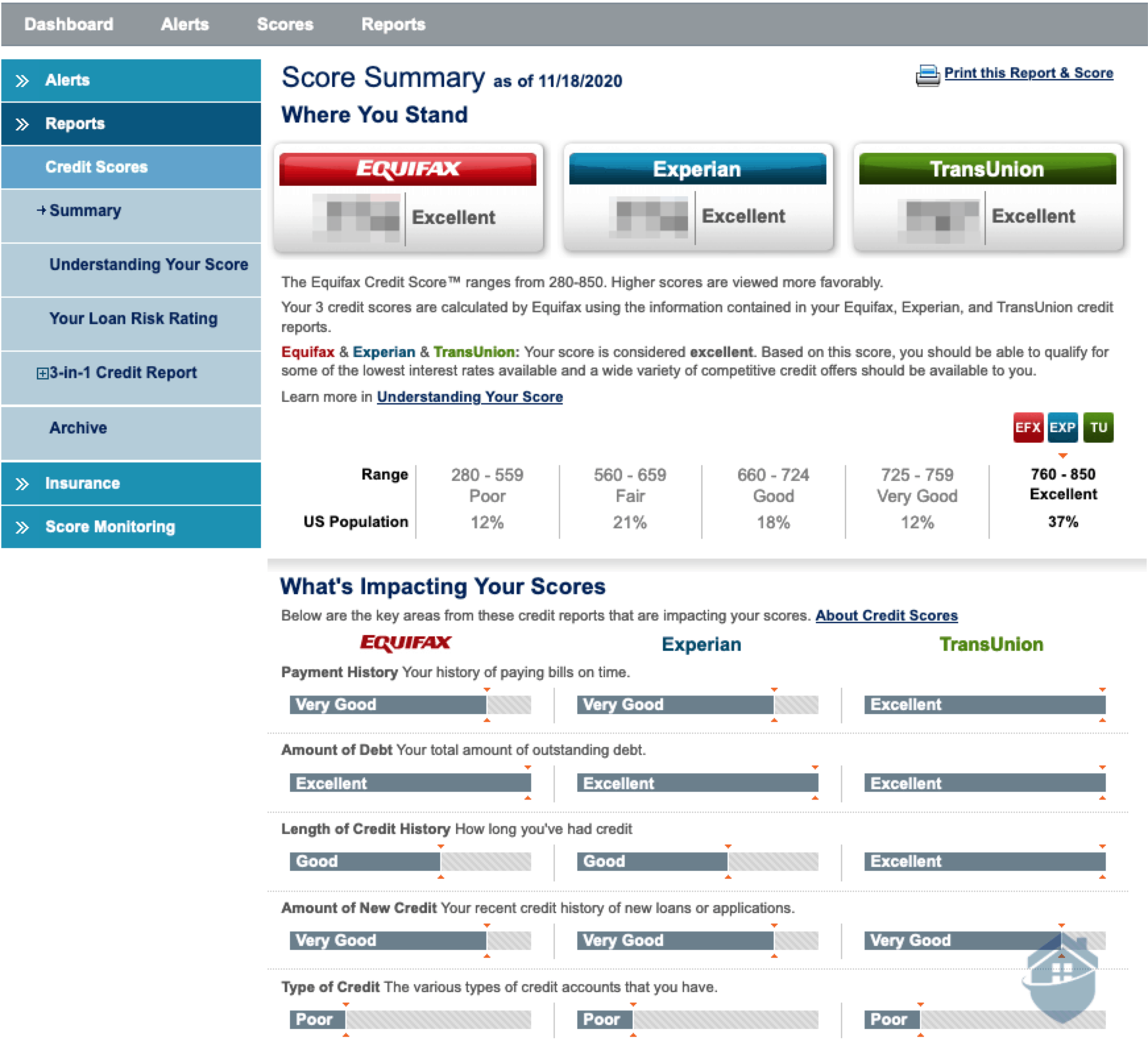
Equifax’s Credit Score dashboard helped us figure out what we needed to do to improve our credit score.
We also had access to a “score graph.” This is something we see in a lot of services, but most are better designed than this. The controls weren’t intuitive in the least, and—to be frank—we couldn’t figure out what a lot of it meant. It would have been really helpful to have some sort of tutorial or at least a hover-over-to-get-a-description function here.
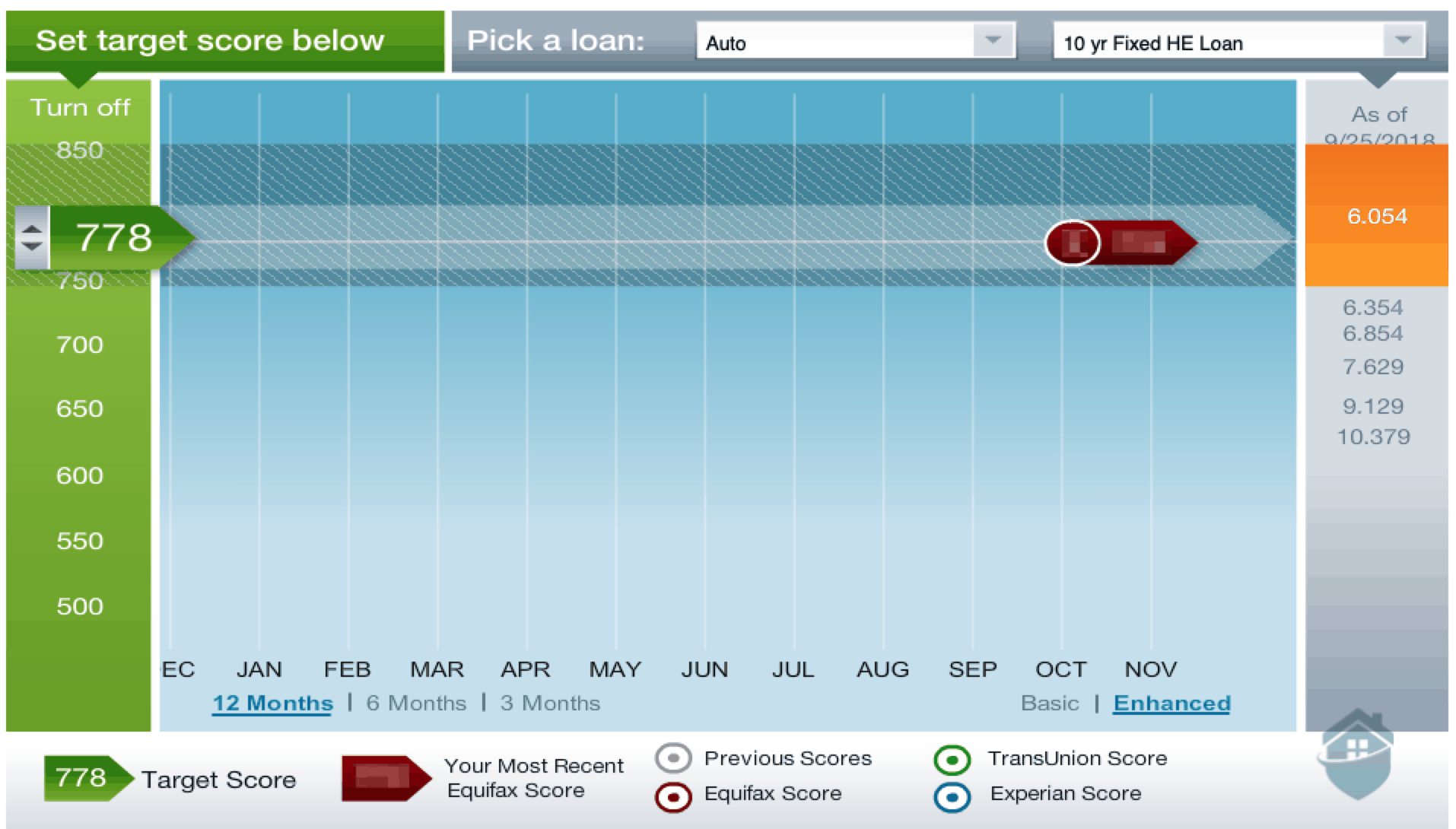
Equifax’s Score Graph had an outdated interface we struggled to understand.
Overall: There was some good and some bad in this section.
We then moved on to our full credit reports. This section of the web app worked better than the credit score section. We got a breakdown of our credit scores from the summary page or see the full report from all three bureaus.
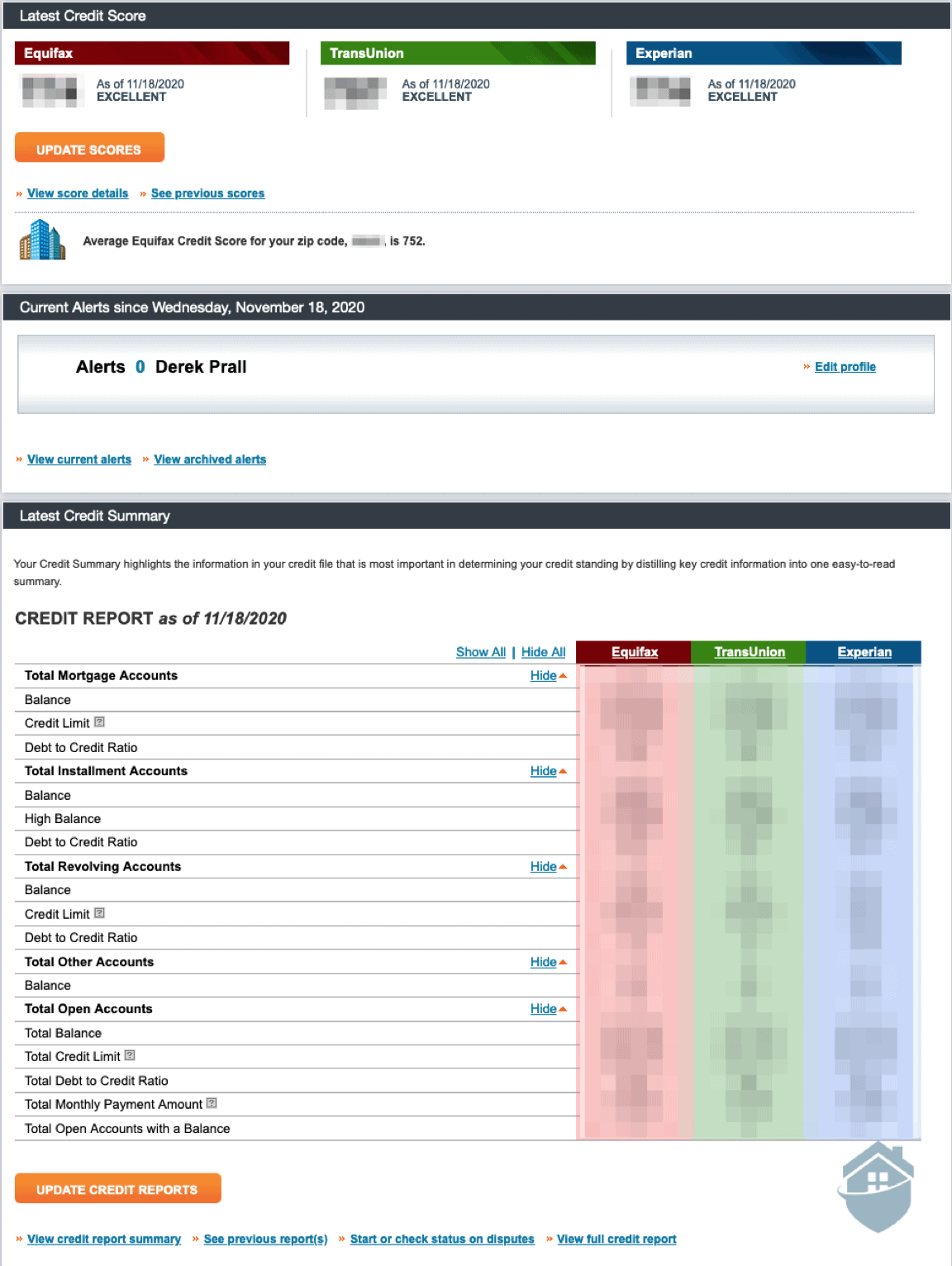
Equifax broke down our credit report into clear categories for all three bureaus.
Did You Know? It’s perfectly normal for your scores to vary from bureau to bureau. Each organization uses slightly different metrics to gauge creditworthiness, so don’t be concerned if you see a fluctuation of a few points.
Given the amount of information Equifax included in their three-bureau credit report, it was dense. Unless you know exactly what you’re looking at, you might miss errors that could be indicative of identity theft. Even for us, it would take some time each week going through the report to notice a sign of identity theft. We’ve seen credit reports handled better (with a little more hand-holding), but we can’t knock Equifax Complete Premier too hard here. It’s exactly what it’s advertised as being, thoroughly detailed.
Next, we wanted to move on to the identity side of the service. Over in the right-hand column was our control panel for all of these functions. Some of the options were already switched “on,” but others needed some input on our part.
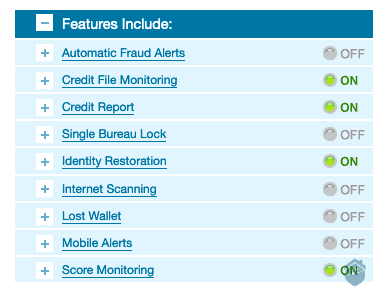
We could choose which Equifax features were active to customize our alerts.
First on the list was our automatic fraud alerts. This places a fraud alert on each of our credit reports that automatically renews every year. We can’t remember seeing this functionality with any other service, and honestly, it’s fantastic that it shows up here.
First on the list was our automatic fraud alerts. This places a fraud alert on each of our credit reports that automatically renews every year. It’s one of the best ways to protect against identity theft because it makes credit bureaus perform thorough vetting—such as calling you directly—when new lines of credit or loans are applied for.5 We can’t remember seeing this functionality with any other service, and honestly, it’s fantastic that it shows up here. We turned it on immediately.
Next on the list was our Single-Bureau Lock. Once activated, this locked our Experian credit file, preventing anyone from accessing it. We love this functionality and have only seen it a few times before. A TransUnion credit lock is more common which we tested with LifeLock.This is an added layer of protection beyond the fraud alert and one that makes sure our reports are extremely secure. Great news there!
Pro Tip: All three bureaus let you lock your credit file and you don’t need an identity theft protection service to do it. But, it definitely makes it easier. That’s why our favorite credit monitoring services all let us lock at least one credit file.
After that, we wanted to activate our Internet Scanning. This function monitors sites that deal in the buying and selling of personal information like social security numbers and financial information.
Once we clicked “activate,” we were, oddly, brought to what looked like the same screen we reached when we first purchased Complete Premier, but this time it was for a product called Equifax WebDetect. WebDetect is available for standalone purchase, but also comes bundled with Complete Premier, apparently.
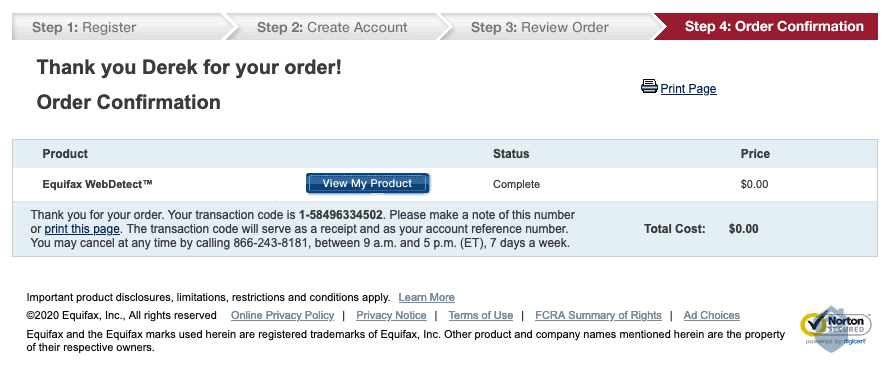
After subscribing to Equifax Complete Premier, we needed to “purchase” WebDetect to activate it.
So we clicked “view my product,” and we were taken back to our dashboard where we were prompted to update the accounts monitored by Internet Scanning. A little circuitous, but okay. We then went into Settings to set everything up.
Here we could add our Social Security Number, up to six credit and debit cards, up to five bank account numbers, up to 10 medical ID numbers, up to three email addresses, and up to five passport numbers. That means we could use most of WebDetect’s features for more than just us.
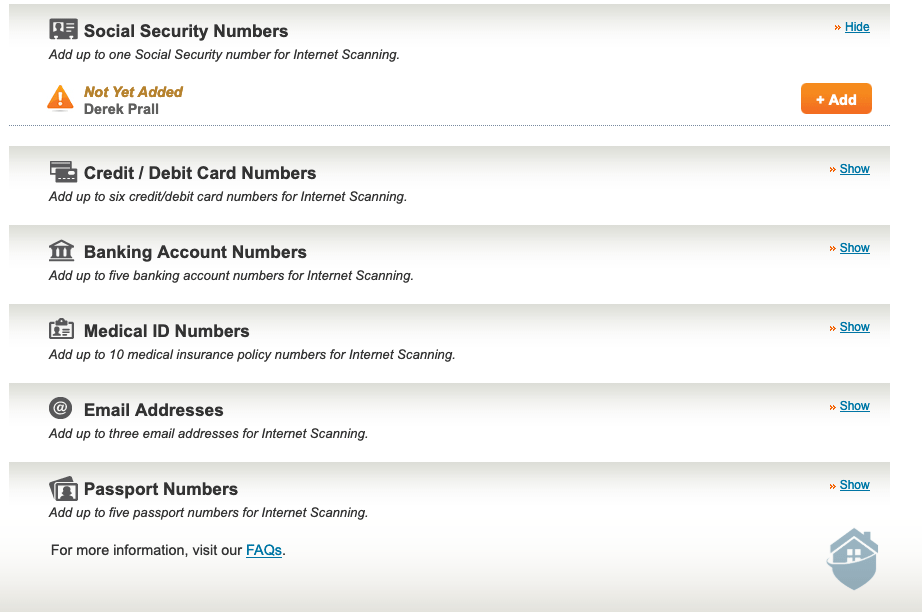
Equifax’s WebDetect scanned the internet for all of our personal information.
Unfortunately, here we ran into some functionality issues with the website again. Entering our information and hitting “submit” under any category would collapse the navigation without actually registering what we input. We tried refreshing the site, logging out and logging back in, and even shutting our computer down and restarting. Eventually, it finally worked and we were able to get our information entered, but this is definitely a ding against Complete Premier. We’re not sure what made it work, so we can’t give you a workaround either aside from keep trying.
Did You Know? Millions upon millions of records show up in dark web marketplaces, but that doesn’t mean you have to be too worried. By practicing safe browsing habits, utilizing dark web monitoring, and developing strong security practices, you can remain ahead of the bad guys.
Moving on, we activated our lost wallet feature, which, from what we could tell, didn’t do too much. We turned it “on,” but we’re just given a notification to contact customer support to start the restoration process. Most competitors didn’t make us turn this feature on since either way we needed to call up their customer service for help restoring the contents of our wallet should it get lost. It’s good functionality to have, for sure, so make sure you turn it on.
Finally, we wanted to set up our mobile alerts. We assumed that it would prompt us to download an app, but not so. There actually is no app for Complete Premier. Or Equifax, for that matter. Instead, we were prompted to enter our cell phone number and carrier.
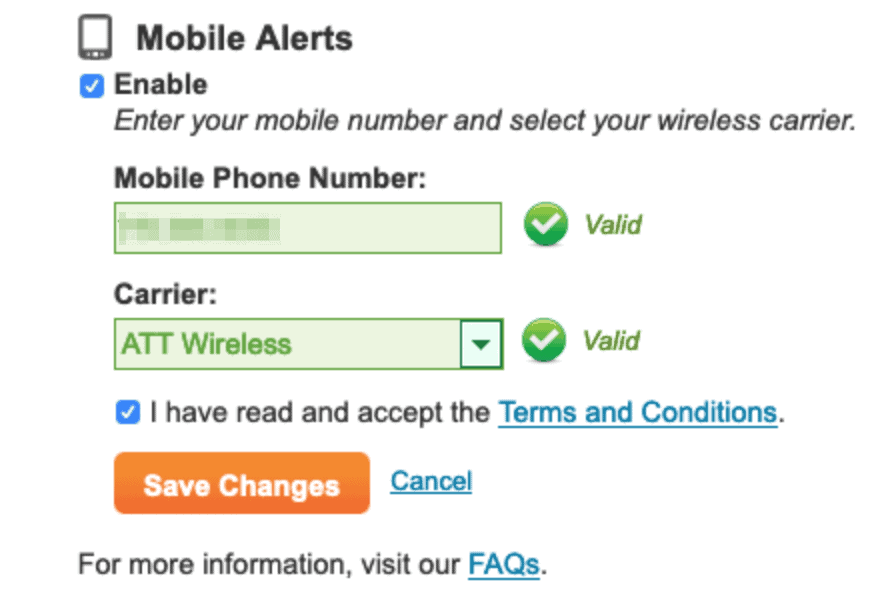
Equifax sent us mobile alerts through text after we opted in since they don’t have an app.
Overall, we were a bit underwhelmed with the identity protection side of things, here. We really would have liked to see some more complete functionality from a credit bureau’s service like we did with our review of Experian IdentityWorks, but at the end of the day, Complete Premier checked most of the boxes for us.
And that’s that for Equifax Complete Premier identity theft coverage. Next we’ll share our takeaway after putting the service through its paces.
Complete Premier does have some positive qualities. First, it’s provided by one of the most trusted names in the credit monitoring business and the credit-related services showed that expertise. The credit report section is thorough, and the credit score section is detailed. We love that they provide a credit lock, and even more that they handle placing recurring fraud warnings on your credit file for you.
But we just can’t avoid talking about the dated website. It’s not just that it looks like a dashboard from the early days of the internet, it’s that the functionality suffers. Some features didn’t work at all without running unsecure plugins and others required us to reload the page multiple times. Given that the best identity theft protection services offer comparable capabilities at similar prices without website issues, we think most people are better off with a competitor.
Complete Premier costs $19.95 per month or $199.95 annually.
Yes, Complete Premier monitors for important pieces of financial and personal information, but the setup can be frustrating.
Yes, Complete Premier monitors Equifax, Experian, and TransUnion while also providing access to complete scores from all three bureaus.
No, Complete Premier does not have a mobile app, but it does offer SMS-based alerts.
Yes, dedicated specialists are on call to help settle identity theft issues, and Complete Premier also offers up to $1 million in identity theft insurance.
Reese, K. (2006, November 3). Equifax. The New Georgia Encyclopedia.
https://www.georgiaencyclopedia.org/articles/business-economy/equifax
Morse, J. (2019, October 10). Why you should lie in your password-recovery questions. Mashable.
https://mashable.com/article/password-recovery-questions-trick/
Elliott, C. (2014, January 2). What to do when you’re billed twice for the same goods or service. The Washington Post.
https://www.washingtonpost.com/lifestyle/travel/what-to-do-when-youre-billed-twice-for-the-same-goods-or-service/2014/01/02/12c0d8c6-6e80-11e3-aecc-85cb037b7236_story.html
Lardinois, F. (2017, July 25). Get ready to finally say goodbye to Flash — in 2020. TechCrunch.
https://techcrunch.com/2017/07/25/get-ready-to-say-goodbye-to-flash-in-2020/
Hipp, D. (2020, November 10). What is a fraud alert? Credit Karma.
https://www.creditkarma.com/id-theft/i/what-fraud-alert